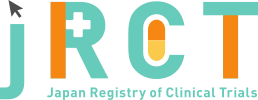臨床研究等提出・公開システム
|
Oct. 22, 2020 |
|
|
Mar. 31, 2023 |
|
|
jRCTs051200070 |
Efficacy of mizoribine after two years of cyclosporine treatment for children with frequently relapsing nephrotic syndrome |
|
EMaCy trial |
|
Oct. 25, 2022 |
|
4 |
|
The median age of enrolled patients was 4.5 years (range 3-8 years), 4 males and 0 females. |
|
The enrollment pace was significantly slower than expected, and the planned number of enrollments was not reached during the enrollment period. Three of the four patients completed the protocol. The remaining patient was discontinued because of desire to change treatment from the protocol. |
|
There is no severe adverse event during the conduct of the clinical study or after the study was completed. |
|
Statistical analysis was not possible due to the small number of enrolled cases. None of the patients regressed to treatment failure (regression rate: 0%). Recurrence was observed in 1 of 3 patients (recurrence rate: 33%). Blood levels of mizoribine were not measured. |
|
Statistical analysis could not be performed on the preventive efficacy of mizoribine after cyclosporine treatment with frequently relapsing nephrotic syndrome. However, none of her 3 treated cases showed frequent relapses, suggesting a protective effect against frequent relapses. |
|
Mar. 31, 2023 |
|
No |
|
There is no plan to share IPD. |
|
https://jrct.mhlw.go.jp/latest-detail/jRCTs051200070 |
Tanaka Yu |
||
Wakayama Medical University Hospital |
||
811-1 Kimiidera, Wakayama City, Wakayama, Japan |
||
+81-73-441-0633 |
||
tanaka-y@wakayama-med.ac.jp |
||
Tanaka Yu |
||
Wakayama Medical University Hospital |
||
811-1 Kimiidera, Wakayama City, Wakayama, Japan |
||
+81-73-441-0633 |
||
tanaka-y@wakayama-med.ac.jp |
Complete |
Oct. 22, 2020 |
||
| Dec. 23, 2020 | ||
| 20 | ||
Interventional |
||
single arm study |
||
open(masking not used) |
||
uncontrolled control |
||
single assignment |
||
treatment purpose |
||
1. Written informed consent from the patients' parents or legal guardians. |
||
1. Prior treatment other than cyclosporine or steroids at relapse for frequent relapsing nephrotic syndrome |
||
| 3age old over | ||
| No limit | ||
Both |
||
Frequently relapsing nephrotic syndrome in children |
||
Treatment. |
||
Rate of regression to treatment failure up to 52 weeks after starting cyclosporine weight loss |
||
Period of progression to treatment failure, recurrence-free rate and recurrence-free period, after starting cyclosporine weight loss |
||
| Wakayama Medical University Certified Review Board | |
| 811-1,Kimiidera,Wakayama-shi, Wakayama | |
+81-73-441-0896 |
|
| wa-rinri@wakayama-med.ac.jp | |
| Approval | |
Aug. 06, 2020 |
none |
